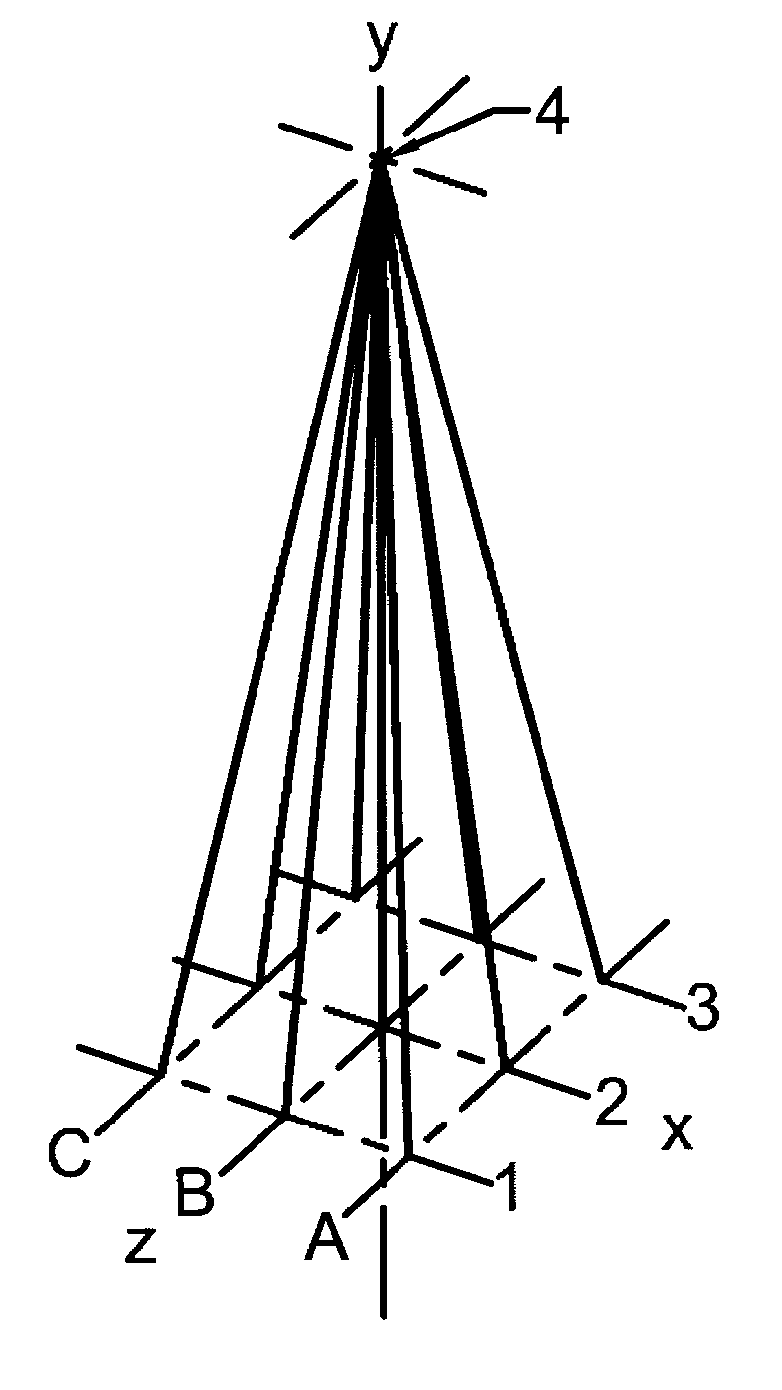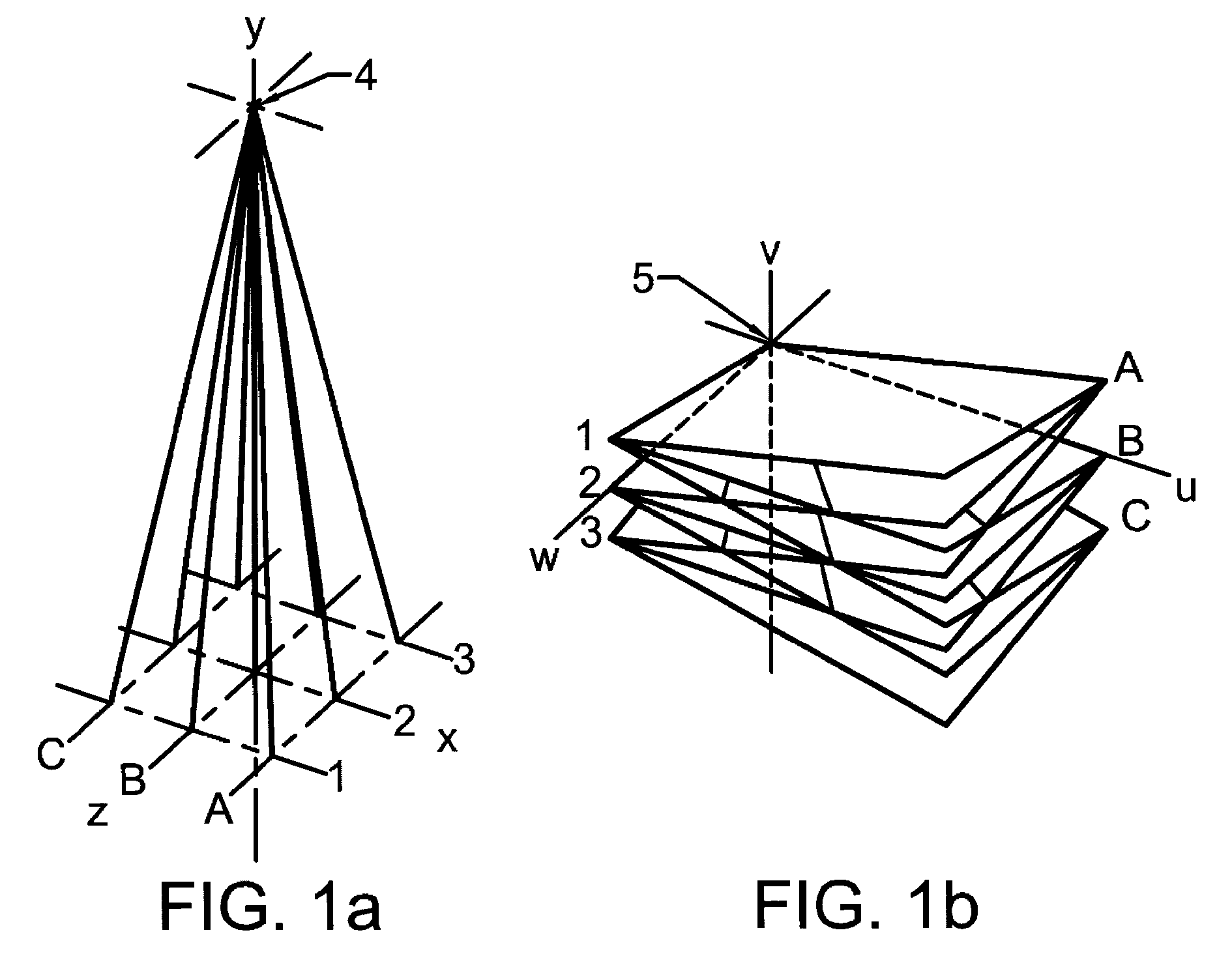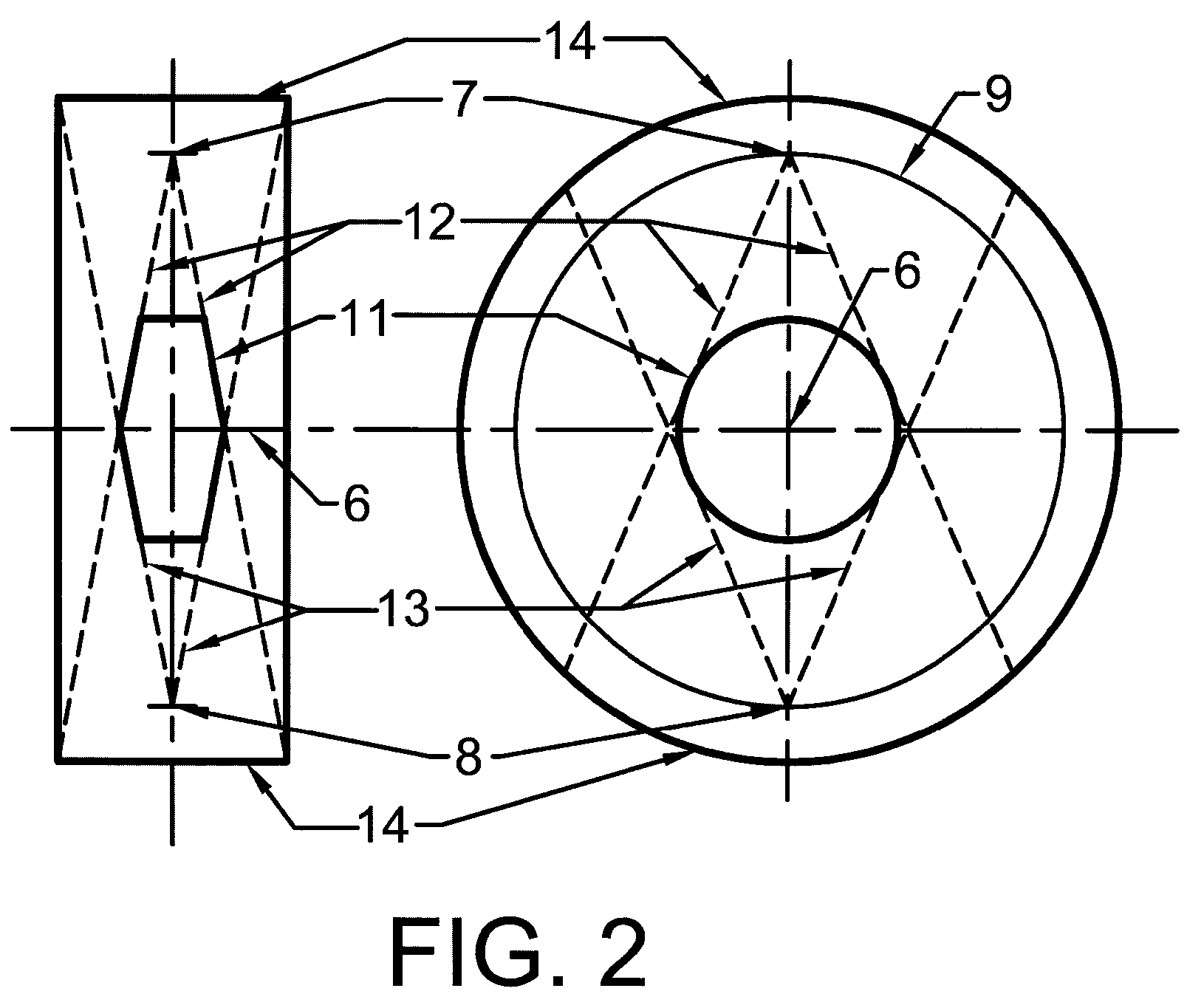Ray-by-ray fourier image reconstruction from projections
a fourier image and projection technology, applied in the field of raybyray fourier image reconstruction from projections, can solve the problems of increasing the difficulty of reconstruction algorithms, the use of more complex reconstruction methods, and the inability to produce images with unacceptable artifacts
- Summary
- Abstract
- Description
- Claims
- Application Information
AI Technical Summary
Benefits of technology
Problems solved by technology
Method used
Image
Examples
Embodiment Construction
[0035] The RbR method can be applied equally well to a wide range of imaging technologies and, in particular, to any of the several ways in which cone-beams are used in CT, including helical scanning and tomosynthesis. The following embodiment shows how to apply the invention to one specific geometry that incorporates x-rays and cone-beam geometry. The following geometry has a fixed cylinder of detector elements and a single rotating source that provides a cone-beam of x-rays. The geometry will be described with reference to the drawings.
[0036]FIG. 1a shows a very simple cone-beam consisting of nine rays arranged in three rows 1, 2, 3 parallel to the x-axis and three columns A, B, C parallel to the z-axis. The three rays in row 2 are on the x-axis and the three rays in column B are on the z-axis. The source 4 and the ray at the intersection of row 2 and column B, or ray 2B, are both on the z-axis. FIG. 1b shows the nine corresponding F-component planes in F-space. For example, the ...
PUM
 Login to View More
Login to View More Abstract
Description
Claims
Application Information
 Login to View More
Login to View More - R&D
- Intellectual Property
- Life Sciences
- Materials
- Tech Scout
- Unparalleled Data Quality
- Higher Quality Content
- 60% Fewer Hallucinations
Browse by: Latest US Patents, China's latest patents, Technical Efficacy Thesaurus, Application Domain, Technology Topic, Popular Technical Reports.
© 2025 PatSnap. All rights reserved.Legal|Privacy policy|Modern Slavery Act Transparency Statement|Sitemap|About US| Contact US: help@patsnap.com



